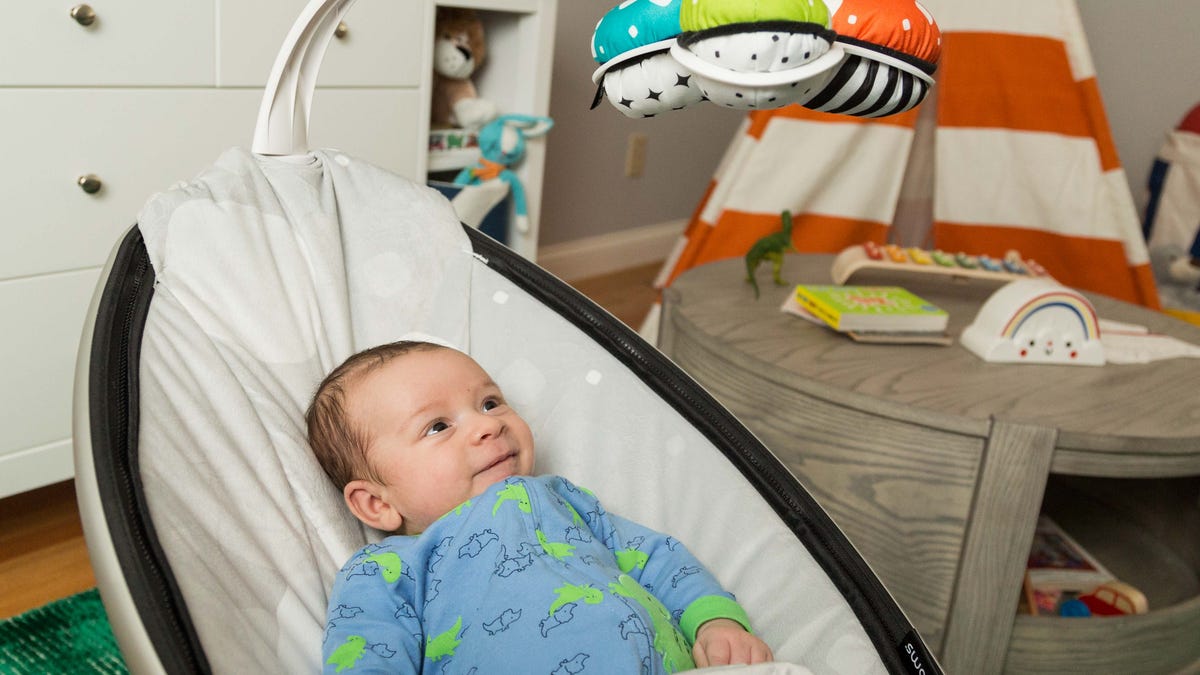Baby tech buying guide
Good investments, bad investments, and knowing the difference.

As a new dad, I know firsthand how hard it can be to figure out what baby-related products will actually make parenting easier. So, I decided to test out some of the coolest, most high-tech baby gadgets I could find, with hopes of helping new parents like me find the tech that can really make a difference. Here are some tips for buying your first smart baby tech.
Find affordable alternatives
Between medical bills, diapers, formula, and all of the other random expenses, it seems inevitable that the first month of your child's life will cost you hundreds if not thousands of dollars. So why buy any smart baby tech at all if it's just going to make life more expensive? Turns out, it doesn't have to.
The best thing you can do while looking for baby-related tech is to buy smart versions of devices you already have to buy. Every kid needs a place to sleep, so getting the $100 Fisher-Price Smart Connect Sleeper isn't much of an extra expense at all. Plus, it adds app-connected vibration, rocking and ambient noise that you wouldn't get for a similarly priced bassinet.
Similar products include the Kinsa Ear Thermometer ($60) and 4moms Infant Tub ($50). Both of these devices are only marginally more expensive than their less intelligent counterparts, but they add some really helpful features.
These are the types of smart products I'd recommend for almost any new parent.
Be wary of expensive alternatives
Some devices seem like smart alternatives to ones you'll buy anyway, but they're significantly more expensive. For instance, while conventional baby monitors can cost as little as $20, smart monitors like MonBaby ($170) and Owlet ($250) have much higher prices.
The reason for the price discrepancy comes down to the core features: smart monitors can track children's activity levels, physical orientation while sleeping, breathing and even blood oxygen levels. These are cool features, but are they really necessary? Some journalists have even questioned whether the expensive products are playing to parents' already acute fears of SIDS (Sudden Infant Death Syndrome) to make sales.
Other expensive devices include changing pads and scales, like Hatch Baby and the Withings Smart Kid Scale. These products encourage parents to track kids' growth over time, recording their feeding, sleeping and sometimes even excreting patterns. And for data-junkies, that information can be really fun to monitor.
But these products cost significantly (sometimes hundreds of dollars) more than their "dumb" counterparts, and often seem more necessary at the time of purchase than two weeks afterward. And you can't blame parents who leave growth-tracking apps untouched while weathering the onslaught of early parenthood.
Many caretakers have found peace of mind in smart monitors and changing pads, and if they're willing to pay a few hundred dollars for them, more power to them. But you should be sure about the investment before feeling pressured -- either by natural parental anxieties or by the advertisements at Babies-R-Us -- to shell out for products that won't in all probability have a dramatic impact on your child's experience.
Have fun with unique items
When my wife was approaching her delivery date, it seemed like every one of our friends had advice for which baby products were "must-buy." Almost nobody will claim that label for an app-connected mobile or a device that counts how many words you say to your child each day. And yet these are some of the most innovative devices on the market. But they're also the ones that parents can take or leave without much worry.
The $70 Fisher-Price Smart Connect Mobile modernizes the conventional device, adding textured animals to the mobile, app-connection, music and ambient noise options, and a mini-projector to display images on the ceiling of a dark room. It's a fun product, and perfect for parents who want more stimulation for their young children.
Likewise, the $200 Starling helps parents remember to verbally engage their young children -- an important part of raising infants and toddlers to be communicative and expressive. For many parents, this device won't be necessary. But for busy new parents who bought all the picture books they could, but struggle to find time to pull them off the shelf and read them to their child, Starling can be a great reminder to engage in small interactions consistently throughout the day.
The beauty of both of these products, and others like them, is that they're not necessary. They don't even claim to be. But they're cool ideas in which parents can invest if they have the cash and see the benefit, and can pass up anxiety-free if they don't.
Make your purchase
Every kid is different, and the needs of every parent are unique. That means the "must-buy" products will vary from family to family. It's almost always a good investment to get affordable alternatives to products you must buy anyway. And it can be a big stress-reliever to get the more expensive alternatives, too, if you're sure they're what you need. But a big part of parenting is having fun with your children -- and that's where the unique products come in.
The best rule of thumb I've learned as a new parent is this: Don't let products dictate your parenting style. Parent your child, and after you discover you need a rocker that helps your kid sleep through the night better, or a device that reminds you to verbally engage your child, then work them into the budget. The rest is noise.

